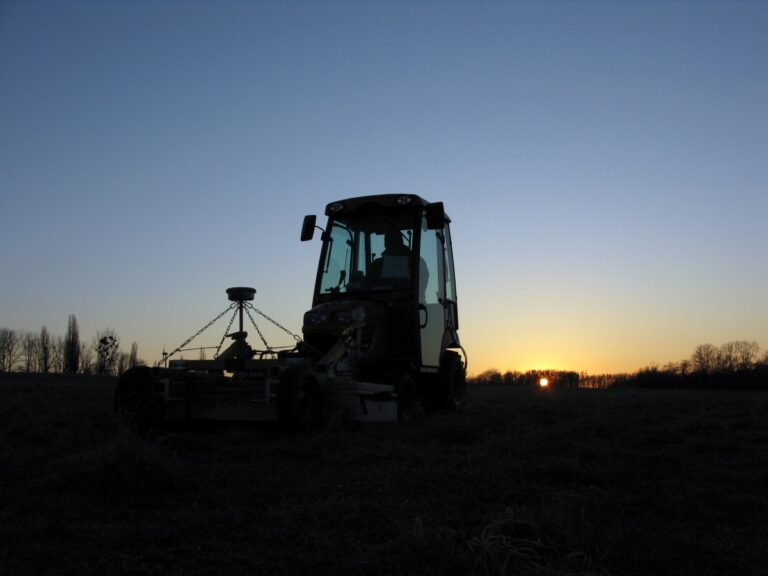Methodological development
The defined research programme is very technical in its outlines and is based on empirical natural science, which provides the facts that can be used for archaeological interpretation.
This interpretation has to consider the methodological and physical background of the data capturing process on the level of expert knowledge, and at the same time has to integrate fundamental knowledge on archaeological structures and their attributes, in order to derive a maximum of relevant information from the complex data sets. Such an integrated archaeological interpretation approach to complex prospection data has been widely neglected in the past due to three main reasons:
- The first reason is based on the fact that archaeological prospection is mainly conducted by experts lacking fundamental archaeological knowledge. Thus interpretation is focused on the definition of anomalous zones or single anomalies and the depiction of ‘possible archaeological evidence’ passed over to the archaeologist for further verification.
- The second reason derives from insufficient fundamental research into the physical and chemical properties of archaeological structures essential for the understanding of the ‘visibility’ of the various archaeological features mapped by remote sensing or geophysical methods.
- The third reason originates in the general understanding of archaeology as being based on destruction by excavation to provide ‘true’ information. This neglects the fact that, excepting scale, resolution and the possibility of analysing actual samples and finds, the process of inference of archaeological information is just as much based on subjective interpretation as is the integrated interpretation of prospection data.
The above conclusions are based on our professional practice, experience and considerations on the fundamental problem of why archaeological prospection, despite its great potential, especially in the field of landscape archaeology, is still not regarded to be of equivalent importance to archaeological excavation and traditional archaeological field methods as the main sources of archaeological facts and knowledge. GIS technology provides an interface between prospection and excavation through a standardisation of methods based on logical and comprehensive data retrieval from the various aspects of the archaeological stratification. We consider the undisturbed archaeological heritage as a stratified 3D volume – at the scale of a site as well as of a complete landscape – which incorporates in its physical structure the clues needed to derive spatio-temporal information for the reconstruction of history and prehistory. This reconstruction based on maps, narratives or VR reconstructions through time are to be considered as the main output of the LBI ArchPro non-invasive archaeological prospection approach.
Therefore the LBI ArchPro is focusing on two interrelated topics that have been habitually handled:
- The integrated data acquisition, i.e. the development of new efficient techniques of non-destructive data capturing, processing, fusion and visualization.
- The integrated interpretation, i.e. new technological and methodological concepts to handle this data and to derive archaeologically relevant content by the means of integrated archaeological interpretation approaches. In this way, both interrelated aspects can be systematically developed further.
In terms of interpretation, it is the integrated concept which is the main objective behind the research programme. Both archaeological sites and landscapes have to be analysed by standardized techniques and reflexive conceptual foundations. For this interpretative part, the research programme includes the complete range of epistemological approaches towards the historical and cultural reconstruction of archaeological landscapes. Regardless of the theoretical approach, we are convinced that only an integrative approach, which combines the concepts of state-of-the-art settlement-, environmental- and landscape archaeology will be the basis of progress in the understanding of our archaeological heritage at a regional scale. For such a holistic approach, it is the quality of the documentation and description of the underlying cultural heritage, which is of paramount importance. Therefore, the formulation of a modern methodology of systematic, large-scaled and integrated archaeological prospection is an absolute necessity to provide a proper basis for any kind of landscape archaeology.
The research topic „intergrated archaeological interpretation of prospection data“ covers the development and evaluation of application-oriented, integrative tools for the integrated archaeological interpretation of prospection data. Although substantial research has been done in the past, this topic requires further advancement for the integration of new developments in methodology, hardware and software algorithms for the deployment of an adequate integrated archaeological interpretation, and the development of novel concepts of dynamic analysis of archaeological landscapes, including temporal relations and attributes. The main challenge will be the transformation of the acquired and processed complex physical data into interpretative archaeological information that is accurate, readable and ready for other archaeologists to use. to derive and to integrate spatial and temporal information.



